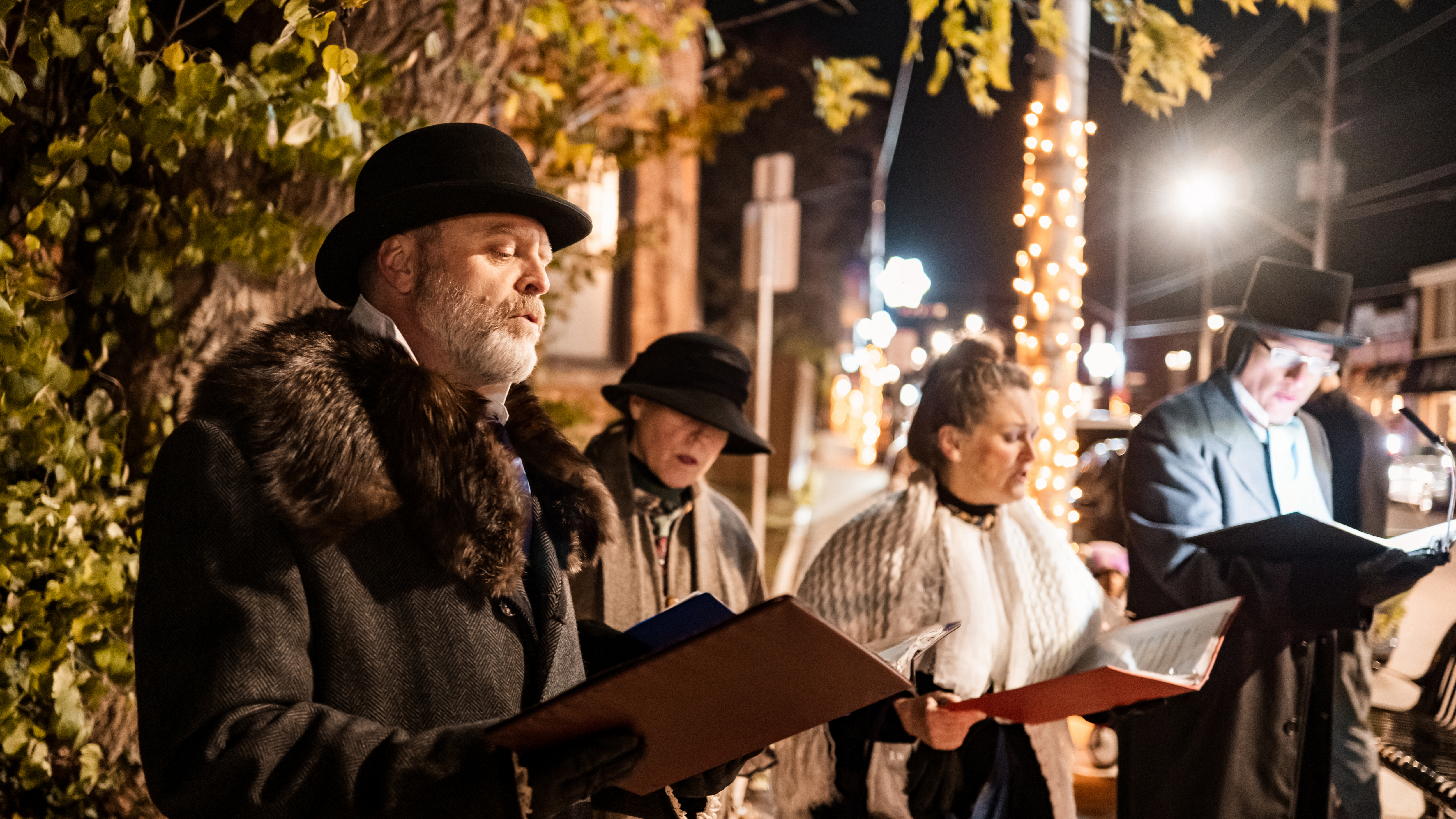Love Came Down
I’ve been around long enough that it should not still come as a shock, yet it still does at times: I am increasingly amazed at the nebulous understanding society has concerning the nature of love. Our world’s constant fixation on - and yet profound misunderstanding of - what love is, is a study in contrasts. Despite our attempts to get closer to and comprehend love more, and even though every aspect of society from science, politics, philosophy, to the arts and religion seek greater understanding and expressions of love, it seems humanity has moved farther away and understands less about love than ever before.
As believers in Christ, we know we have been created to be in relationship. This is not simply having the capacity for relationship, but the fundamental need: We must be in relationship in order to be physically, emotionally and spiritually healthy. The world’s singers might opine what they feel is a rhetorical question, “What’s love got to do with it,” yet a follower of Christ understands that love has everything to do with everything and that it is not some “second hand emotion.”
We learn from scripture that "God is love." Love is not a 'what,' but a 'Who.'
 With the Christmas season now upon us it gives rise to the celebration of when Love became flesh and dwelt amongst humanity. We celebrate the birth of Jesus Christ who is the embodiment of love. Jesus came to earth to show us the way to live a life of devotion and compassion. He taught us to love God with everything we are, everything we have, and to love our neighbours as ourselves. His message of love is one that continues changing cultures and people groups throughout history.
With the Christmas season now upon us it gives rise to the celebration of when Love became flesh and dwelt amongst humanity. We celebrate the birth of Jesus Christ who is the embodiment of love. Jesus came to earth to show us the way to live a life of devotion and compassion. He taught us to love God with everything we are, everything we have, and to love our neighbours as ourselves. His message of love is one that continues changing cultures and people groups throughout history.
Speaking of songs of love and Love that came down, did you know that Canada’s oldest Christmas carol was created by a Jesuit missionary priest, and in a Canadian indigenous language no less? Friar Jean de Brébeuf created this for the Wendat/Huron First Nation around 1640-41. Writing lyrics in the native language of the Huron/Wendat people, Brébeuf’s original Huron title is "Jesous Ahatonhia" ("Jesus, He is born"). Soon translated into French, and then into English, it quickly spread throughout the world. Almost 400 years later, the “Huron Carol” continues to be recorded by contemporary artists today.
 Even before this carol spread in vast popularity, being subjected to translations and various artistic interpretations, the Wendat people who believed this good news of Jesus in subsequent Christmas seasons built small chapels of fir trees and bark in honour of the manger at Bethlehem. This became the 'stable' where Jesus was born. The animals at the manger were the fox, the buffalo and the bear. Jesus would be wrapped in rabbit skin, the shepherds were hunters, the magi were portrayed as chiefs from afar who brought fox and beaver pelts instead of the familiar gold, frankincense and myrrh. Some Hurons even travelled as much as two days to be there for the Christmas celebration.
Even before this carol spread in vast popularity, being subjected to translations and various artistic interpretations, the Wendat people who believed this good news of Jesus in subsequent Christmas seasons built small chapels of fir trees and bark in honour of the manger at Bethlehem. This became the 'stable' where Jesus was born. The animals at the manger were the fox, the buffalo and the bear. Jesus would be wrapped in rabbit skin, the shepherds were hunters, the magi were portrayed as chiefs from afar who brought fox and beaver pelts instead of the familiar gold, frankincense and myrrh. Some Hurons even travelled as much as two days to be there for the Christmas celebration.
They had experienced the revelation of how the Creator (Love) came in the flesh.
In today’s vernacular we often hear how love is a gift from God. We hear that we are to receive it freely, and in turn, it is something we are called to share freely with others. At Christmas we are reminded of this central message of the Yuletide season. But why?
 As we celebrate Christmas, the season, and all the wonderful trappings that it can entail, let us remember the true meaning of the season … when Love came down. Love is not a product but a person. Let us give Jesus this Christmas.
As we celebrate Christmas, the season, and all the wonderful trappings that it can entail, let us remember the true meaning of the season … when Love came down. Love is not a product but a person. Let us give Jesus this Christmas.
Advent reflections shared by Dan Collado, Mission Canada Indigenous Peoples Coordinator.
As believers in Christ, we know we have been created to be in relationship. This is not simply having the capacity for relationship, but the fundamental need: We must be in relationship in order to be physically, emotionally and spiritually healthy. The world’s singers might opine what they feel is a rhetorical question, “What’s love got to do with it,” yet a follower of Christ understands that love has everything to do with everything and that it is not some “second hand emotion.”
We learn from scripture that "God is love." Love is not a 'what,' but a 'Who.'
 With the Christmas season now upon us it gives rise to the celebration of when Love became flesh and dwelt amongst humanity. We celebrate the birth of Jesus Christ who is the embodiment of love. Jesus came to earth to show us the way to live a life of devotion and compassion. He taught us to love God with everything we are, everything we have, and to love our neighbours as ourselves. His message of love is one that continues changing cultures and people groups throughout history.
With the Christmas season now upon us it gives rise to the celebration of when Love became flesh and dwelt amongst humanity. We celebrate the birth of Jesus Christ who is the embodiment of love. Jesus came to earth to show us the way to live a life of devotion and compassion. He taught us to love God with everything we are, everything we have, and to love our neighbours as ourselves. His message of love is one that continues changing cultures and people groups throughout history.Speaking of songs of love and Love that came down, did you know that Canada’s oldest Christmas carol was created by a Jesuit missionary priest, and in a Canadian indigenous language no less? Friar Jean de Brébeuf created this for the Wendat/Huron First Nation around 1640-41. Writing lyrics in the native language of the Huron/Wendat people, Brébeuf’s original Huron title is "Jesous Ahatonhia" ("Jesus, He is born"). Soon translated into French, and then into English, it quickly spread throughout the world. Almost 400 years later, the “Huron Carol” continues to be recorded by contemporary artists today.
 Even before this carol spread in vast popularity, being subjected to translations and various artistic interpretations, the Wendat people who believed this good news of Jesus in subsequent Christmas seasons built small chapels of fir trees and bark in honour of the manger at Bethlehem. This became the 'stable' where Jesus was born. The animals at the manger were the fox, the buffalo and the bear. Jesus would be wrapped in rabbit skin, the shepherds were hunters, the magi were portrayed as chiefs from afar who brought fox and beaver pelts instead of the familiar gold, frankincense and myrrh. Some Hurons even travelled as much as two days to be there for the Christmas celebration.
Even before this carol spread in vast popularity, being subjected to translations and various artistic interpretations, the Wendat people who believed this good news of Jesus in subsequent Christmas seasons built small chapels of fir trees and bark in honour of the manger at Bethlehem. This became the 'stable' where Jesus was born. The animals at the manger were the fox, the buffalo and the bear. Jesus would be wrapped in rabbit skin, the shepherds were hunters, the magi were portrayed as chiefs from afar who brought fox and beaver pelts instead of the familiar gold, frankincense and myrrh. Some Hurons even travelled as much as two days to be there for the Christmas celebration.They had experienced the revelation of how the Creator (Love) came in the flesh.
In today’s vernacular we often hear how love is a gift from God. We hear that we are to receive it freely, and in turn, it is something we are called to share freely with others. At Christmas we are reminded of this central message of the Yuletide season. But why?
 As we celebrate Christmas, the season, and all the wonderful trappings that it can entail, let us remember the true meaning of the season … when Love came down. Love is not a product but a person. Let us give Jesus this Christmas.
As we celebrate Christmas, the season, and all the wonderful trappings that it can entail, let us remember the true meaning of the season … when Love came down. Love is not a product but a person. Let us give Jesus this Christmas.Advent reflections shared by Dan Collado, Mission Canada Indigenous Peoples Coordinator.